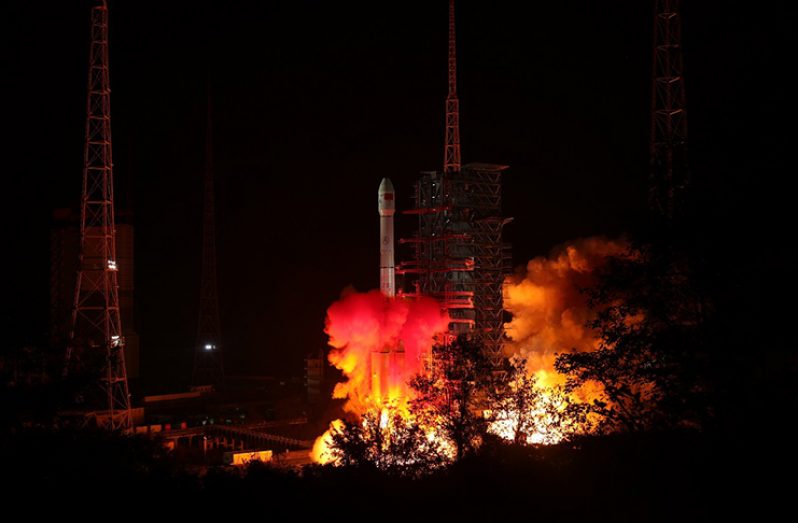China’s Chang’e-4 lunar probe was launched in the early hours, and it is expected to make the first-ever soft landing on the far side of the moon.
A Long March-3B rocket, carrying the probe including a lander and a rover, blasted off from the Xichang Satellite Launch Center in southwest China’s Sichuan Province at 2:23 a.m., opening a new chapter in lunar exploration.
Since the moon’s revolution cycle is the same as its rotation cycle, the same side always faces the earth. The other face, most of which cannot be seen from earth, is called the far side or dark side, not because it’s dark, but because most of it remains unknown.
The Chang’e-4 mission will be a key step in revealing the mysterious far side of the moon.
“The soft landing and exploration of the far side, which has never been done before, will gain first-hand information about the terrain and lunar soil components and other scientific data, which will help enrich our understanding of the moon and the universe,” said Zhang He, executive director of the Chang’e-4 probe project.
The scientific tasks of the Chang’e-4 mission include low-frequency radio astronomical observation, surveying the terrain and landforms, detecting the mineral composition and shallow lunar surface structure, and measuring the neutron radiation and neutral atoms to study the environment on the far side of the moon, the China National Space Administration (CNSA) announced.
China has promoted international cooperation in its lunar exploration program, with four scientific payloads of the Chang’e-4 mission developed by scientists from the Netherlands, Germany, Sweden and Saudi Arabia. Three scientific and technological experiments, designed by Chinese universities, will also be carried out during the mission.
DARK SIDE
Nobody had ever seen the far side of the moon before the Soviet Union launched the Luna 3 probe in 1959, which was the first-ever mission to photograph the far side.
The United States Apollo 8 mission sent three astronauts to fly around the moon in 1968, the first time that people saw the moon’s far side with their own eyes.
Remote-sensing images show the far side is thickly dotted with impact craters and has much fewer lunar mares than the near side. Scientists infer that the lunar crust on the far side is much thicker than the near side. But why so is still a mystery. “As no astronauts or rovers have ever landed on the far side, we know little about it except for speculation based on remote-sensing images,” Zhang said.
Astronomers are also seeking a completely quiet electromagnetic environment to detect the weak signals emitted from remote celestial bodies in deep space. (Xinhua)












